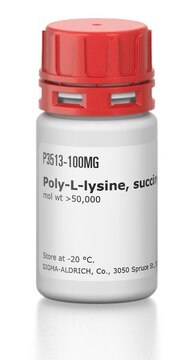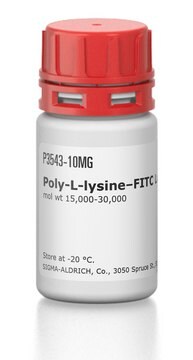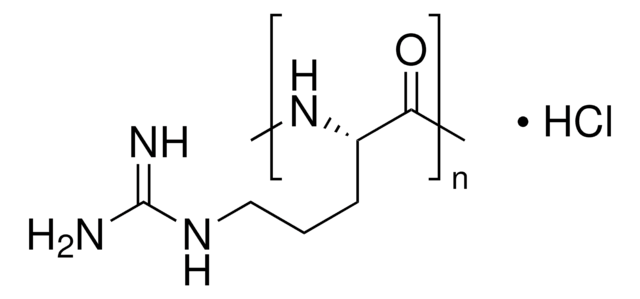P9404
Poly-L-lysine hydrochloride
suitable for cell culture, Mol wt >30,000
Synonym(s):
L-Lysine hydrochloride homopolymer
About This Item
Recommended Products
Product Name
Poly-L-lysine hydrochloride, mol wt >30,000
form
powder
mol wt
>30,000
technique(s)
FTIR: suitable
cell culture | mammalian: suitable
color
white to light yellow
storage temp.
−20°C
Looking for similar products? Visit Product Comparison Guide
Application
Analysis Note
Other Notes
Storage Class
11 - Combustible Solids
wgk_germany
WGK 3
flash_point_f
Not applicable
flash_point_c
Not applicable
ppe
Eyeshields, Gloves, type N95 (US)
Choose from one of the most recent versions:
Already Own This Product?
Find documentation for the products that you have recently purchased in the Document Library.
Customers Also Viewed
Articles
Recently, layer-by-layer (LbL) assembly has emerged as a versatile, gentle and, simple method for immobilization of functional molecules in an easily controllable thin film morphology.1,2 In this short review, we introduce recent advances in functional systems fabricated by using the mild, yet adaptable LbL technique.
Humankind has utilized protein materials throughout its existence, starting with the use of materials such as wool and silk for warmth and protection from the elements and continuing with the use of recombinant DNA techniques to synthesize proteins with unique and useful properties.
Our team of scientists has experience in all areas of research including Life Science, Material Science, Chemical Synthesis, Chromatography, Analytical and many others.
Contact Technical Service








